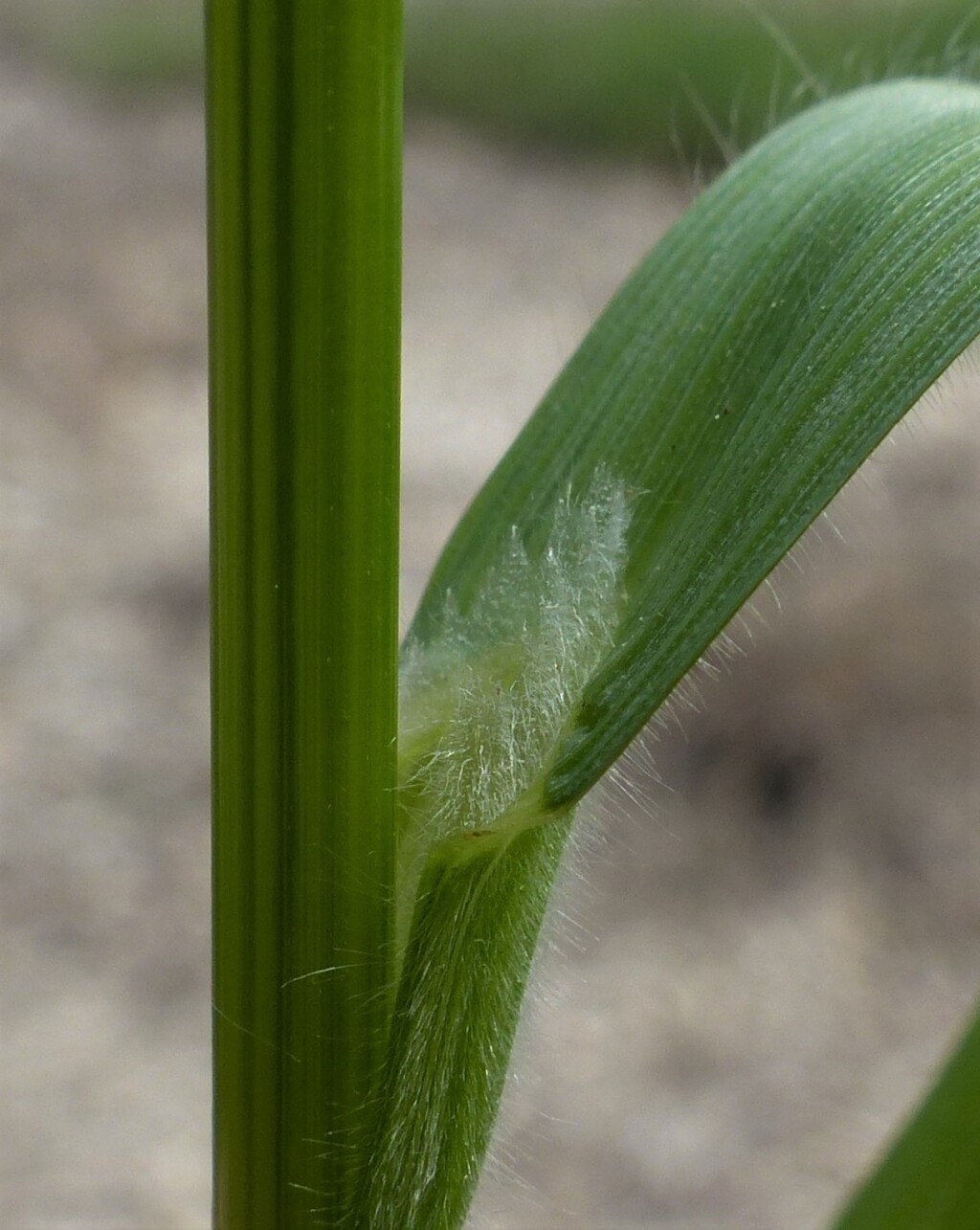Bromus hordeaceus
L. Soft BromeSlender, few-leaved annual, culms erect, to 80 cm high. Leaves softly hairy; sheath often with decurved hairs; blade flat, to 12 cm long and 6 mm wide; ligule pubescent on abxial surface, shortly toothed, c. 1 mm long. Inflorescence a rather dense, narrowly ovate to linear panicle, to 10 cm long, pedicels mostly shorter than spikelets. Spikelets plump, (4–)6–10(–13)-flowered, lanceolate, 12–18 mm long (excluding awns), usually covered with soft hairs, rarely glabrous; lower glume 3-nerved, 4.5–7 mm long, upper glume 5-nerved, 5.5–8 mm long; lemma 7.5–10 mm long (excluding the awn), membranous, blunt at apex and with a notch c. 1 mm deep; awn erect to slightly spreading, 4–11mm long, inserted at the base of the notch. Flowers Oct.–Jan.
LoM, MuM, Wim, GleP, Brid, VVP, VRiv, MSB, RobP, MuF, GipP, OtP, WaP, Gold, CVU, GGr, DunT, NIS, EGL, EGU, WPro, HSF, HNF, OtR, Strz, MonT, VAlp. Naturalised in all States except NT. Also widely naturalised in other countries (e.g. North and South America, New Zealand); native to most of Europe. Occurs in most habitats following disturbance but uncommon in areas of high rainfall away from cultivated land. A common component of pasture and hay.
Walsh, N.G. (1994). Poaceae. In: Walsh, N.G.; Entwisle, T.J., Flora of Victoria Vol. 2, Ferns and Allied Plants, Conifers and Monocotyledons, pp. 356–627. Inkata Press, Melbourne.
 Spinning
Spinning




